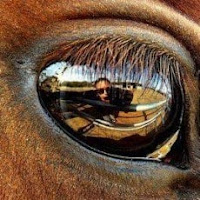The craft of farriery has been around for so many centuries that it’s difficult to imagine it changing very much. The premise behind farrier work sounds so simple and time-tested: level the horse’s foot, fit a horseshoe if necessary, and place said horseshoe on the animal’s foot in such a way that the foot, when placed back on the ground, is still level and even.
The endgame of the trim and shoe job (a sound steed with healthy balanced feet) might have gone relatively unchanged for a while now, but the ways you can arrive at this goal are always expanding as science-minded people look for ways to improve our understanding of the horse’s foot and what the farrier’s job can add to its functionality.
Exciting things are afoot (sorry… it was right there) in the world of farrier science. Here are some recent technological developments that are starting to affect the ways farriers do their jobs:
In-shoe force-measuring system
Patrick Reilly, chief of farrier services at the University of Pennsylvania School of Veterinary Medicine, is working with a technology company called Tekscan to develop “an in-shoe force-measuring system” that would determine how much force is actually at work on different parts of the foot during activities like galloping and jumping. The hope is that the data collected by the system will eventually help farriers develop better and more tailored orthotics for horses who need a lot of hoof support, as in laminitis cases. At a basic level, it would let farriers and owners know if a certain kind of shoe is actually evening out the loading patterns of a foot and helping the horse.
Wireless sensors for flexion tests
A team of orthopaedic surgeons led by John Marshall at the University of Glasgow’s School of Veterinary Medicine completed a study in 2012 that involved putting wireless sensors onto a number of horses and performing flexion tests on them in an attempt to make the findings of flexion tests more objective. The sensors calculated asymmetries in vertical pelvic movement and pelvic height between right and left hind leg strides. Their hope is that the sensors will give a better indication of the degree of unsoundness present in a horse even when the lameness is very subtle. Great news for owners who feel like their horses are “just a bit off somewhere.”
Hoof measurement and analysis software
Hoof measurement and analysis software has also recently been created for use as a more accurate diagnostic tool. ONTRACKEQUINE sells software that lets farriers and other equine professionals measure angles and distances on a photograph, video, or radiograph of a horse’s foot. EponaTech’s Metron software also allows a farrier to accurately get a read-out of the exact angles and measurements of a horse’s foot from a picture or X-ray. Both programs store data so comparisons can be made at each farrier visit. That way you can objectively tell what’s changing in the hoof.
There’s a free version of this kind of software from the National Institutes of Health called NIH Image, although it’s not specific to horse hooves.
Better adhesives for shoes
For working with shoes and feet, the biggest leap in technology has involved the materials farriers have available to them. Stronger and more water-resistant adhesives have made the glue on shoe a huge development in the way horses are shod. New adhesives tend to be flexible, moving with a horse’s foot while it holds a shoe onto it. They can be fixed onto the bottom of a hoof, like a regular shoe, or applied with a cuff that seals around the bottom of the outer hoof wall. They’ve become quite common lately, especially in the racing world and farriers who use them say they create a stronger hoof wall and a healthier hoof all around.
Adhesives to rebuild and replace hoof wall
Adhesives have also been designed to rebuild and replace hoof wall. They’re created out of materials that can be shaped to fill cracks or open spaces and can often be filed, just like a horse’s hoof. Because the adhesives are flexible and bond with the horse’s natural hoof wall, this pretty much does away with having to wait until a damaged section of hoof grows out before a horse can resume work. A quick Internet search will give you a number of companies that make these products if your local supply shop doesn’t carry any.
Apps
Any talk of new technology and farrier work would be remiss without looking at cell phone apps for the busy blacksmith. Naturally, Google has one. It’s called STAFF farrier, and it keeps track of business information, the history of each horse, bills, balances and expenses and has a place to store pictures and videos of each horse. The catch: it’s currently only in French. Farriers Manager Mobile also has a “web-based application” for phones and laptops. It works as an account book, appointment schedule, contact list, stock list, picture/video organizer, records-keeper for horse and business and report generator, in case you want to see what your profit margin is. Maybe you don’t want that, though…
Read about the Advances in Veterinary Science>>
by Cindy McMann








.jpg)

